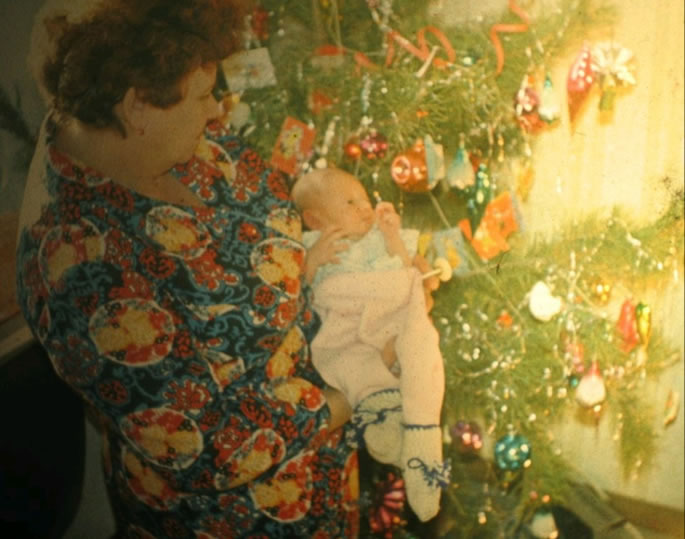As we approach the end of the calendar year, I am often asked, “Why do Soviet Jews buy evergreen trees for New Year’s?” The truth is that the reason for this tradition is intertwined with our Soviet upbringing.
I have many complex emotions about my childhood in the former Soviet Union. As I sort through the memories of oppression, anti-Semitism and suffocating propaganda, I try to focus on the positive aspects of my early experiences. Winters in Russia were overwhelmingly cold and long, but society adapted to the climate, and children in particular loved this time of the year. The government built ice castles with slides and mazes in the main squares of major cities. I now see the magnificent lights hidden inside those translucent ice bricks as glimmers of hope and possibility for a better tomorrow.
Soviet propaganda prohibited all religious holidays, allowing only two significant, non-Communist-related celebrations: birthdays and New Year’s Eve. The New Year’s celebrations often lasted for weeks as the Soviet citizens enjoyed drinking and partying.
Since religious observances of any kind were banned by the Soviet government, holiday symbols had to be secretly and strategically replaced and renamed. The Communist government erected enormous evergreen trees in the main squares of every city. These trees were renamed “New Year’s trees,” in order not to associate with their original source. The most prominent and recognizable character of the holiday was Grandpa Frost. Coincidentally, of course, Grandpa, named “Ded Moroz,” had a white beard and heavy winter coat with matching pants, and he gave out presents and delicacies such as chocolates and tangerines. Grandpa Frost had a granddaughter, “Snegurochka,” which roughly translates as “Snowwoman.”
Two adults in every family secretly dressed as the famous pair and appeared a few minutes before the clock struck 12 to distribute gifts to the children. Every family erected a New Year’s tree in their small Soviet apartments, under which parents would carefully place gifts from Grandpa Frost and his granddaughter.
Simply put, these celebrations were the highlight of the Soviet childhood with the smell of the New Year’s tree eliciting joy and excitement.
My family immigrated to the United States in 1989, and I struggled to forge a new identity and to make sense of the newly found freedom. After I began my journey to connect to my Jewish heritage, I discovered enormous meaning behind our Jewish holidays and traditions. Like many Soviet Jews, however, I still found it extremely challenging to disconnect from familiar Soviet customs and symbols, despite my intellectual understanding of Soviet inadequacies. Even once we discovered that the “New Year’s trees” are symbols of an iconic December holiday, this knowledge somehow didn’t change our desire to be connected to the winter traditions.
Perhaps the only way to rechannel, refocus and transform our dedication to the practices of our childhood is to find heartwarming, relevant meaning in the eternal richness of our Jewish heritage. The new generation of children born long after the fall of the Communist regime can’t relate to our Soviet memories. Without judgment, I do believe that putting up a tree on Dec. 31 and decorating it with Jewish symbols creates identity confusion in our children. Perhaps instead of reinforcing old Soviet traditions with the new generation, we can teach them about our Jewish wisdom and sacred customs.
As people start to prepare for winter holidays, I reflect upon my first car-menorah parade in Philadelphia. I remember joining hundreds of people on an almost three-mile parade—starting at the John F. Kennedy Parkway near 22nd Street and ending at Independence National Historical Park—led by Chabad-Lubavitch of Greater Philadelphia. The parade ended with dancing, eating sufganiyot (doughnuts) and a giant menorah-lighting by Rabbi Abraham Shemtov, who, in 1974, was the first rabbi in the world to light a public menorah, also in Philadelphia. I felt so proud having a menorah attached to the roof of my car. I felt like I had found my place in the world, as if that menorah infused me with clarity, connection and purpose. As the Lubavitcher Rebbe has taught, the best way to fight darkness is to shine a little bit of light.
Change can be complicated, unexpected and challenging. Memories are the same. On Dec. 31 of each year, I stay up to watch the ball drop, eat tangerines and remember the smell of the “New Year’s tree” of my childhood. Yet I no longer feel the need to celebrate this day by recreating those memories. My joy comes from lighting Friday-night candles, smelling the aroma of challah, dressing up for Purim carnivals, eating matzah at the Passover Seder and watching the glimmering lights of a menorah that commemorates the miracle of Chanukah.
It took 40 years to reach the Promised Land under the leadership of Moses, our greatest teacher. We can all appreciate the effort it takes to transition from our familiar reality and circumstances. So perhaps the next time you meet Soviet-born Jews who are looking forward to decorating a tree at the end of December, realize that they are simply trying to recreate their childhood experiences. Offer some heartwarming memories of your own celebrations, and invite them to experience the beauty of their Jewish heritage.
Why I No Longer Need My Holiday Tree – Chanukah & Kislev (chabad.org)

